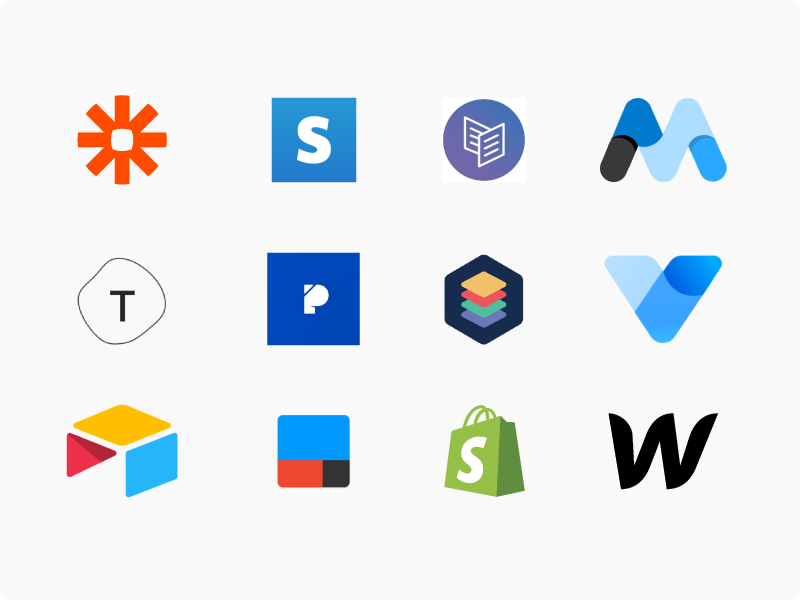How No-Code Tools Simplify Open Platform Database Development for Every Person
How No-Code Tools Simplify Open Platform Database Development for Every Person
Blog Article
A Comprehensive Guide to Executing Scalable Data Sources Without the Demand for Coding Knowledge
In the modern landscape of information monitoring, the capacity to implement scalable data sources without coding proficiency is coming to be significantly necessary for organizations of all sizes. What are the vital aspects that can absolutely equip these users to utilize scalable data sources successfully?
Understanding Scalable Data Sources
In the world of modern-day information monitoring, scalable data sources have emerged as a critical service for organizations seeking to take care of increasing volumes of details efficiently. These databases are created to fit growth by permitting the smooth addition of resources, whether via straight scaling (including a lot more devices) or upright scaling (upgrading existing equipments) This flexibility is necessary in today's hectic digital landscape, where information is created at an extraordinary rate.
Scalable data sources generally make use of distributed styles, which enable information to be spread throughout numerous nodes. This circulation not just boosts performance yet also gives redundancy, guaranteeing data availability also in the event of hardware failures. Scalability can be an essential element for different applications, including e-commerce systems, social media sites networks, and huge data analytics, where user need can fluctuate considerably.
Moreover, scalable data sources often feature robust information consistency designs that stabilize performance and integrity. Organizations should consider their details demands, such as read and write rates, information integrity, and fault tolerance when selecting a scalable database solution. Inevitably, recognizing the underlying concepts of scalable databases is crucial for businesses aiming to grow in an increasingly data-driven world.
Trick Attributes to Seek
When evaluating scalable databases, several vital features are extremely important to ensuring optimum efficiency and reliability. Firstly, take into consideration the style of the database. A dispersed architecture can improve scalability by permitting information to be kept throughout numerous nodes, assisting in seamless data access and handling as demand increases.
An additional important feature is information partitioning, which makes it possible for efficient monitoring of large datasets by dividing them into smaller sized, a lot more workable pieces (no-code). This strategy not only improves efficiency but also simplifies source appropriation
In addition, seek durable replication abilities. This attribute ensures information redundancy and high schedule, decreasing downtime during upkeep or unforeseen failings.
Efficiency surveillance tools are likewise essential, as they offer real-time insights into system wellness and functional performance, permitting timely changes to maintain ideal performance.

User-Friendly Data Source Devices
Simpleness is a critical element in the design of easy to use database devices, as it boosts availability for users with varying levels of technical knowledge. no-code. These devices focus on intuitive user interfaces, allowing users to develop, handle, and query databases without needing comprehensive programs understanding
Secret attributes typically include drag-and-drop capability, visual information modeling, and pre-built layouts that streamline the arrangement procedure. Such devices commonly use guided tutorials or onboarding procedures that help with user involvement and minimize the knowing contour. In addition, seamless combination with prominent information sources and services makes sure that customers can conveniently import and export information, even more streamlining procedures.

Additionally, durable support and area sources, such as forums and documents, improve the customer experience by offering support when required. Overall, user-friendly data source tools encourage organizations to harness the power of scalable data sources, making data management easily accessible to every person involved.
Step-by-Step Implementation Overview
Just how can organizations efficiently execute scalable data sources to meet their expanding information demands? The procedure begins why not try these out with recognizing details data demands, including the volume, variety, and rate of information that will be processed. Next, companies should review easy to use data source devices that use scalability features, such as cloud-based solutions or took care of database solutions.
As soon as the appropriate tool is selected, the next step includes setting up the data source atmosphere. This consists of establishing up circumstances, defining customer permissions, go to the website and establishing information structures that line up with organization objectives. Organizations needs to then migrate existing data into the new system, making sure information stability and very little interruption to procedures.
Post-migration, carrying out comprehensive screening is important; this consists of performance screening under various lots conditions to guarantee the system can deal with future growth - no-code. Additionally, it is very important to educate team on the data source management user interface to facilitate smooth use
Ideal Practices for Monitoring
Effective administration of scalable databases requires a tactical approach that focuses on ongoing surveillance and optimization. To accomplish this, companies ought to carry out robust monitoring tools that offer real-time insights into data source performance metrics, such as inquiry response times, source usage, and transaction throughput. Regularly examining these metrics can help determine traffic jams and areas for renovation.

Normal back-ups and disaster recovery strategies are important to safeguard information stability and schedule. Establishing a regular for examining these back-ups will certainly guarantee a dependable recuperation process in situation of an unforeseen failure.
Moreover, efficiency tuning ought to be a continual process. Changing indexing strategies, enhancing inquiries, and scaling resourcesâEUR" whether vertically or horizontallyâEUR" will certainly assist preserve optimal performance as use needs progress.
Finally, fostering a culture of understanding sharing amongst staff member will make it possible for continual discovering and adaptation, guaranteeing that the monitoring of scalable data sources stays reliable and efficient over time.
Final Thought
In verdict, the execution of scalable databases can be successfully accomplished without coding expertise via the application of instinctive user interfaces and user-friendly tools. By sticking to the described techniques for configuration, information migration, and performance testing, individuals can browse the intricacies of database administration effortlessly. Highlighting ideal practices for ongoing maintenance and cooperation more improves the ability to handle scalable data sources efficiently in a swiftly developing data-driven atmosphere.
In the contemporary landscape of information management, the capability to implement scalable databases without coding knowledge is coming to be progressively important for organizations of all sizes.In the world of modern-day information monitoring, scalable databases have actually emerged as an essential solution for organizations looking for to take care of increasing volumes of info successfully.Moreover, scalable data sources frequently feature durable data uniformity models that balance efficiency and reliability.Exactly how can organizations successfully carry out scalable databases to meet their growing data needs? Next off, companies should assess straightforward data source tools that use scalability attributes, such as cloud-based solutions or handled database solutions.
Report this page